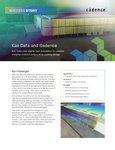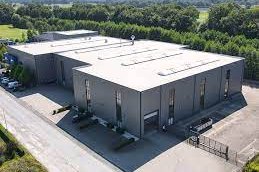With the world’s appetite for data more ravenous than ever thanks to the pandemic, the carbon footprint of the planet’s data centers is steadily increasing. With as much as 40 percent of an average data center’s energy consumption attributable to cooling, there is a clear need for more efficient heat transfer technology when aiming to achieve net zero carbon emissions by 2050.
The pandemic has caused somewhat of a paradigm shift in the way we view connectivity. As workers transitioned to remote working en masse, access to data has become more crucial than ever, leading some to label a broadband connection as the ‘fourth utility’. While our growing dependence on the internet is hardly a new phenomenon, the effects of Covid-19 have inarguably amplified this.
However, behind our burgeoning digital demand is a very real physical consequence. Even before the pandemic, research from Digital Infrastructure indicated that the world’s data center emissions were equivalent to that of global air travel in 2019. With 2050’s target of achieving net zero carbon emissions pressing ever closer, IT infrastructure appears to be increasing its carbon footprint when it should be doing the opposite. As such, there is a clear need to address the energy consumption of data centers worldwide.
Energy usage in data centers
To effectively reduce data center energy consumption, it is first necessary to identify where and how data centers use energy. Many might be shocked to learn that as much as 40 percent of the average data center’s energy usage can be attributed solely to cooling. However, this is largely due to a reliance on antiquated mechanical cooling techniques, so there is clear scope for a move towards more sustainable practice.
Currently, the majority of data centers cool their servers by way of thermal exchange, drawing heat out of the internal server and into a heat exchanger, which is then cooled by any number of means. The problem here lies not with the heat exchanger itself – but with the cooling techniques used. Mechanical cooling makes use of an electrically powered chiller to artificially lower the temperature of the heat exchanger. Ultimately, the electricity used to power the chiller is drawn from the combustion of fossil fuels, simultaneously raising operating costs and environmental impact.
Moreover, many data centers currently experience high levels of energy wastage in the form of residual heat. With enormous amounts of electricity used to power a data center in a given day, a large amount of heat is created as a by-product. As such, recycling this currently wasted energy will be key to improving efficiency of operations within data centers.
Alternative cooling
While mechanical cooling has long been the industry standard for heat transfer in data centers, there have since been a number of developments in the field that have the potential to reduce reliance on traditional mechanical cooling techniques. With the heat exchanger growing from a simple thermal transfer device into a sophisticated piece of technology in its own right, the door has been opened to a plethora of ‘free’ cooling techniques that take advantage of the natural environment.
For example, data centers that are local to large water sources such as a sea or river can utilize these as a source of free cooling, using a deep cold-water intake to draw water into a closed chilling loop. This serves as a natural coolant to the servers, with the warm water then discharged by way of a shallow effluent. Crucially, liquid cooling not only serves as a more efficient method of heat transfer than a mechanical chiller system, but it does so at a decreased operational cost and environmental impact.
Other methods of free cooling technology include open cooling towers, which – when the climate allows – uses the naturally low temperature of the outside air to cool the server and minimize use of the chiller. This method is particularly effective in colder regions such as the Nordics, where air temperatures allow natural cooling to take place throughout the year. However, leaving the cooling tower open is a leading cause of fouling, so operators should exercise caution when employing this method.
Waste heat potential
Moreover, perhaps one of the most exciting developments in data center energy management is the use of heat recovery systems. A prime example of this concept was recently put into action by Alfa Laval in a Danish data center, where the residual heat from severs was used to power a local heating network. The resultant saving was over 100,000MWh of energy per year - enough to provide heat and hot water to 6,900 homes! Evidently, the potential for heat recovery systems in data centers is enormous. Sites can benefit from bespoke solutions that push the boundaries of energy management.
Final thoughts
When the vast number of free cooling and heat recovery solutions available are set out, it is clear that it is not technology that is outdated – but our approach to cooling techniques. Modern heat exchanger technology allows the application of a virtually limitless number of innovative cooling solutions, so it is critical that this potential is explored fully if IT infrastructure is to develop in a sustainable manner.





